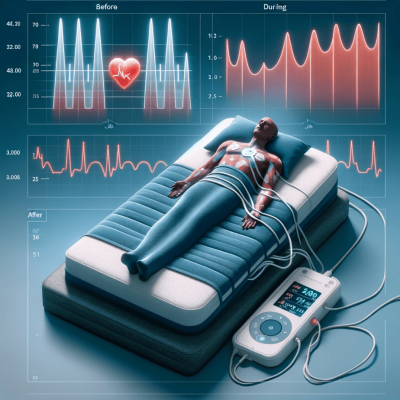In today?s news, we will look at the new study that there has been a steady rise in the number of children who are treated in emergency rooms for suicidal thoughts. The rise began even before the Covid-19 outbreak, which brought record-high demand for pediatric psychological care. Meanwhile, WHO and the Ukrainian Ministry of Health have agreed to work together to improve the availability of mental health services in the nation. The goal is to improve people’s access to psychological and mental health services at the primary care level. On the other hand, state health officials have refrained from going into further detail beyond their pledge to give kids’ mental health first priority. Children’s mental health organizations in the community worry that they are not given enough attention.
Table of Contents
ToggleStudy shows ‘huge’ spike in kids with suicidal thoughts in ER
Original Source: Study finds ?huge? increase in children going to the emergency room with suicidal thoughts
According to a new study, the amount of children seen in emergency rooms for suicidal thoughts has risen steadily, even before the Covid-19 outbreak brought record high demand for psychological care for children.
Pandemic affects heightened focus on teen and kid suicide. In June, the Biden administration dubbed the surge in childhood sadness, anxiety, and suicidal thoughts a “mental health catastrophe.”
The Pediatrics study used Illinois hospital data. Between January 2016 and June 2021, researchers counted the number of 5 to 19-year-olds who sought suicide help at emergency departments.
During that time, 81,051 young individuals visited the ER with suicidal ideation. A quarter of these visits led to hospitalizations.
Suicide-related ER visits surged 59% from 2016-17 to 2019-21. Suicidal ideation jumped from 34.6% to 44.3%.
Between fall 2019 and fall 2020, suicidal hospitalizations rose 57%.
?It really really emphasizes how mental health difficulties were actually a problem before the pandemic. Dr. Audrey Brewer is an attending physician in advanced general pediatrics and primary care at Ann & Robert H. Lurie Children’s Hospital of Chicago and a researcher at Northwestern University Feinberg School of Medicine. We noticed more kids with suicidal ideation than we expected. We saw 5-year-olds.
?To see kids presenting to emergency departments for mental health or for suicide-ideation-related visits is quite concerning.?
Brewer feels the true numbers are substantially higher because not all suicidal kids go to the ER.
It’s not a state-specific issue, say experts.
Dr. Nicholas Holmes, senior vice president and chief operational officer of Rady Children’s Hospital in San Diego, said the increase in kids seeking therapy is “deep.”
?We used to see one to two people a day with behavioral health crises; now we see 20-plus a day,? said Holmes, who was not involved in the current research.
Rady, the largest children’s hospital on the West Coast, has an inpatient psychiatric unit.
To treat more of these youngsters, Holmes? hospital system is partnering with county health and human services to help develop a pediatric-focused mental and behavioral health campus. Rady’s inpatient behavioral health facility will be doubled, and outpatient therapy services will be expanded.
Other US cities aren’t as fortunate. Research demonstrates a national shortfall of mental health beds for kids. The number of residential treatment institutions for children fell 30% between 2012 and 2020, according to a federal survey.
Mental health issues that can lead to suicide have increased alongside the care shortage. 1 in 3 high school pupils and 50% of female students experienced hopelessness and sadness in 2019, up from 40% in 2009. And there was a 36% increase in pupils who reported considering suicide, according to the US Centers for Disease Control and Prevention.
Brewer thinks it may be a mix of circumstances that more young people are seeking help for suicidal thoughts.
Many of the children who were hospitalized with suicidal ideation had additional mental health problems such anxiety, depression and substance use, she said.
Children also are responding to stress in their life and social impacts on their health such poverty, historical trauma and marginalization, difficulties at school, online bullying and the pressures introduced by social media, in addition to a lack of access to counseling and therapy.
Brewer said adults can intervene when a child is thinking about suicide. She urges caregivers to check for school or friend troubles and a youngster who is isolating or showing more anxiety or aggressiveness than usual.
“They may act out or sleep poorly. We often think about irritability, withdrawal, and isolation, said Brewer.
It never hurts to seek help from a pediatrician about how to help a child who?s struggling.
“Parents should feel empowered to listen and talk to their kids. Try to understand them and build constructive relationships, Brewer advised.
She hopes youngsters will have easier access to mental health services.
Brewer said: “We need a strategy to help support all kinds in different ways and focus on traumas and social influences of health.” “More kids need safe spaces to grow and thrive.”
WHO and Ukraine’s Ministry of Health signed a memorandum to improve mental health services
Original source: WHO and Ukraine Ministry of Health sign memorandum on cooperation on mental health
A collaboration agreement between WHO and the Ukrainian Ministry of Health has been inked in an effort to improve the country’s delivery of mental health services. The goal is to improve people’s access to psychological and mental health services at the primary care level.
The signing of the pact between the Ukrainian Health Minister, Viktor Liashko, and WHO Representative Dr. Jarno Habicht, “marks a historic occasion since there is a commitment to expand the provision of mental health services in Ukraine through primary health care.”
“WHO’s mhGAP has been working in Ukraine since 2019, but the demands have escalated significantly as a result of the Russian Federation’s invasion on February 24. As a result, we urgently need to ramp up training and services. More than 10 million people in the nation today require mental health help, so I want to congratulate the Ministry of Health and the First Lady’s Office for making mental health a priority. And I thank each of the partners because working together, we can accomplish more, Dr. Habicht continued.
The Mental Health Gap Action Programme (mhGAP) is a WHO global initiative that was started in 2008 to increase access to mental health treatments by involving non-specialist healthcare providers, like family physicians and nurses, in service delivery. More than 20 languages, including Ukrainian, have been used in the program’s materials translations, which are presently being used in more than 100 nations worldwide.
The program trains non-specialist staff on how to assist those suffering from common mental illnesses such depression, anxiety, post-traumatic stress disorder, and suicide ideation. 655 health professionals, including family doctors, pediatricians, therapists, paramedics, and nurses, had finished their training in Ukraine as of July 2022.
“Last week, the government expanded the medical guarantee program with a new package called “Support and treatment of adults and children with mental problems at the main level of medical care.” According to Minister Liashko, this package will raise the capitation rate for family physicians with the necessary training, enabling them to conduct early diagnosis and offer fundamental psychological therapy to anyone in need.
“The National Mental Health and Psychosocial Support Programme was established at First Lady Olena Zelenska’s initiative to ensure that mental health treatments are of the highest caliber and available to all people. The memorandum’s signature and the subsequent proceedings are significant from two angles. The first is having access to assistance close to home, in a convenient location, and in a context they can comprehend. The second concern is the need to change how healthcare professionals approach their work in order to promote a comprehensive picture of physical and mental health, according to Anna Luschai, the director of accessibility and mental health at the Ukrainian First Lady’s Office.
Partners are finishing up the creation of an online self-study course on the management of mental diseases in primary care facilities in Ukraine in addition to doing face-to-face trainings. The initial modules of the course, which is based on mhGAP training materials, will go live in November.
The Ministry of Health, the Office of the First Lady of Ukraine, WHO, UNICEF, the International Medical Corps, Medicos del Mundo, the Mental Health for Ukraine project, Project HOPE, the project “Development of a sustainable public health system in Ukraine,” the Academy of Family Medicine of Ukraine, the Academy of Family Medicine of Ukraine; the nongovernmental organization ?Proliska?; and the Ukrainian Public Health Foundation are among the partners who confirmed their commitment to cooperation on the implementation of the mhGAP training program in Ukraine.
State leaders won’t say how much they’ll invest on children’ mental health
Original source: State leaders won?t commit to specifics about how much they might invest in children?s mental health
Jelynne LeBlanc Jamison faces a hard choice every month when hundreds of youngsters in serious mental and behavioral distress arrive at her publicly funded San Antonio mental health facility.
Turning them away would leave her money for a larger staff at The Center for Health Care Services, the only mental health authority in Bexar County.
It could minimize wait times for the agency’s uninsured or underserved youngsters. If resources weren’t so stretched, she’d have more therapy alternatives for youngsters.
Jamison chooses to service all the kids regardless, drawing them into her already overcrowded system of state-funded providers and risks employee burnout, long wait times, and desperate families bouncing between overloaded providers.
?We’re often the sole [behavioral health] source,? she said. “We serve children hence.”
Another $730,000 per year would help the facility, which averages 1,800 youngsters but was financed for only 1,600 in the last budget cycle, absorb treatment costs.
Jamison is still waiting for state health executives to contribute more monies to her budget for 2024-25, when she anticipates the trend to continue: more people and children requiring treatment than her clinics can handle.
In less than three months, Texas lawmakers will create a new budget after going through more than 100 department budget requests totaling over $20 billion.
State health leaders have only promised to emphasize kid mental health. No one knows how much extra funds health providers like Jamison will have in the next two years to treat the expected spike in patients.
Jamison: “We’re frustrated because no dollars have been discussed.” “Nothing.”
According to a recent budget plan, Texas’ health and human services agency expects federal money for counseling and medical services for children to decline by 5%. The department did not include increased funding for child mental health services for 2024-25.
The department spent $3.6 billion on children’s and adults’ behavioral health last year. Per capita mental health spending ranks Texas 51st among states and D.C.
Officials and politicians are still determining what kind of financing is required to expand children’s mental health care and other programs. The final budget measure is passed in May and takes effect in September.
They believe the omission doesn’t mean mental health treatments aren’t important.
In the wake of the May elementary school massacre in Uvalde, Republican House Speaker Dade Phelan requested over $100 million in extra financing to improve children’s access to mental health services, including telemedicine and pediatric psychiatric beds. Gov. Greg Abbott promptly authorized more than $10 million to mental health programs, including $5.8 million to enhance telemedicine for children and $4.7 million to increase at-risk juvenile care.
One Republican budget leader said the response should continue throughout the next biennium.
Rep. Giovanni Capriglione, a Southlake Republican and chair of the House Appropriations Subcommittee on Health and Human Services, said this is a key priority. “Many of our constituents tell us they need these services.”
A representative for the state’s health and human services department said funding requests for mental health services are “a starting point” and will be adjusted before debate begins on the budget draft.
“We needed more time to examine the state’s demands,” said spokesperson Jos? Andr?s Araiza. Improving mental health services for all Texans, including community, inpatient, and Medicaid-funded services, is a primary priority.
Agencies may be afraid to ask for too little too quickly due to laws limiting how much they can increase their requests each year.
Omitting a funding request amount doesn’t always indicate poor priority. Abbott has not requested financing for his $4.4 billion Operation Lone Star, a clear priority.
As public discussion increases over how the state will divide a $27 billion surplus, state agencies’ perceived quiet on child mental health financing has alarmed those who serve them.
Health care providers and advocates say it’s hard to compete when so many other groups and agencies are vocal and detailed about using taxpayer cash.
?Given the surge in children’s mental health difficulties over the last decade and all the comments from state leaders about its importance, we’re surprised it isn’t a priority in the budget requests,? said Josette Saxton, director of mental health policy at Texans Care for Children.
Texas’ 39 local mental health authority cooperate with local schools, municipalities, and community organizations to treat adults and children with serious mental illnesses, especially low-income or rural Texans.
Therapy or medicine is given to kids. When a diagnosis requires intense treatment, state-funded or partner-provided inpatient care or long-term home care can be provided.
On average, 28,000 children are treated through local mental health authority in Texas each month, according to a 2019 estimate by the Texas Legislative Budget Board.
Even these budget increases aren’t keeping up with population growth and demand, Jamison added.
In the wake of the pandemic, mental health clinicians in Texas say they are more underfunded and overloaded than ever, causing families to languish on wait lists or services to be decreased.
Multiple studies including the CDC report that record numbers of children and teens are seeking care for anxiety, despair, suicidal thoughts, trauma, intellectual disability, substance misuse, and behavioral difficulties.
Since 2019, majority of the extra money for mental health care for young people in budget legislation has gone to the Texas Child Mental Health Care Consortium, which has received $330 million in state and federal funds.
The Texas Higher Education Coordinating Board, which funds the consortium, requests $124.3 million for the next cycle, the same as last year.
Overseen by Dr. David Lakey, vice chancellor for health affairs at The University of Texas System, the consortium brings together providers and experts from higher ed institutions around the state to identify students in schools who need help, connect them with providers via telemedicine, and consult on cases to ensure the child gets the needed treatment.
Lakey, a former state health commissioner, said he expects a “significant increase” for the next biennium after Abbott ordered the program to expand statewide after the Uvalde shooting. 365 of the state’s 1,200 school districts are participating.
Lakey said the group hasn’t decided how much money it needs.
“We’re not a state agency, so we don’t file legislative appropriations requests,” Lakey said. “In conversations with legislators and working with them to ensure they’re comfortable with the job and price tag. I’m hesitant to give a number because I want the Legislature to consider what’s needed.
Summary of today?s mental health news
Overall, according to a new study, the frequency of children with suicidal thoughts seen in ERs has risen steadily, even before the Covid-19 outbreak. Suicide-related ER visits surged 59% from 2016-17 to 2019-21. Suicidal ideation jumped from 34.6% to 44.3%. Between fall 2019 and fall 2020, suicidal hospitalizations rose 57%. Dr. Audrey Brewer said, ?We saw more kids than we typically do that we ? wouldn?t necessarily have thought would have problems about suicidal ideation. We saw 5-year-olds. To see them presenting to emergency departments for mental health or for suicide-ideation-related visits is very concerning.?
Additionally, an agreement on collaboration to improve the delivery of mental health services in the nation has been signed by WHO and the Ukrainian Ministry of Health. The Mental Health Gap Action Programme (mhGAP) is a WHO global initiative that was started in 2008 with the goal of enhancing access to mental health services by enlisting non-specialist medical personnel, such as family physicians and nurses, in the delivery of care. Including family doctors, pediatricians, therapists, paramedics, and nurses, 655 members of the medical profession had successfully finished their training in Ukraine as of July 2022.
Finally, community groups that treat children with mental illness fear they won’t be a priority as the state debates how to spend billions in additional money. Texas lawmakers will create the new budget after reviewing more than 100 agency budget requests totaling nearly $20 billion. State health leaders have only promised to emphasize kids mental health. No one knows how much extra funds health providers like Jamison will have in the next two years to treat the expected spike in patients.








